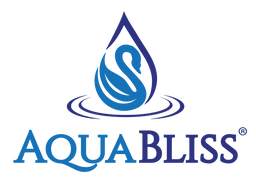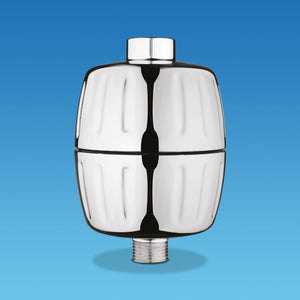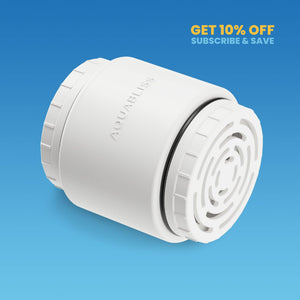When you drink a glass of tap water, fill a pot for food preparation, or wash dishes, you're probably not thinking about the chemicals in your water system. But don’t let the thought of chemicals alarm you — disinfection of drinking water is essential for public health.
Without the disinfection process, our water would be filled with pathogens and bacteria that could lead to waterborne diseases, such as typhoid fever, or even more dangerous contaminants like fecal coliform. Tap water undergoes various disinfection methods to maintain water quality, ensuring it's safe for consumption.
These processes eliminate pathogenic microorganisms, including viruses, bacteria, and other contaminants, making your water safe to drink. In this blog post, we’ll break down how the disinfection process works, what disinfectants are used, and how you can be sure your drinking water is safe.
What Is Water Disinfection?

Water disinfection refers to killing or inactivating dangerous microorganisms that can cause illness. This includes removing disease-causing organisms and preventing future microbiological contamination. Disinfection methods target bacteria, viruses, and pathogens that thrive in surface water and distribution systems.
Many harmful bacteria are found in untreated water sources such as rivers, lakes, and wells. During the water treatment process, these pathogens must be eliminated before the water reaches your tap. Additionally, disinfection is necessary to combat any contamination that occurs in the water supply pipelines.
Water disinfection is different from sterilization. While sterilization kills all microorganisms, including harmless ones, the disinfection process focuses on eliminating harmful pathogens. The Environmental Protection Agency (EPA) ensures the safety of our drinking water by setting regulations on how the disinfection process is managed across the U.S.
Why Is Disinfection Important?
Before the implementation of modern drinking water disinfection, waterborne pathogens like cholera, dysentery, and salmonella caused widespread illness. These diseases still occur in regions without effective water treatment.
As far back as ancient Greece, people filtered water with charcoal or used sunlight to improve its quality, but these were rudimentary methods compared to today’s chemical disinfectants.
The introduction of chlorine disinfection and other methods has been one of the 20th century’s greatest public health achievements. In the U.S., typhoid fever cases dropped dramatically after the widespread use of disinfectants like chlorine and chloramine.
According to the World Health Organization, disinfecting water is critical to reducing disease and maintaining global public health.
Common Disinfectants in Drinking Water
The most common disinfectants in U.S. drinking water supplies are chlorine and chloramine disinfection. Chlorine disinfection is used by more than 98% of water treatment plants.
Chlorine dioxide, sodium hypochlorite (liquid bleach), and potassium permanganate are also commonly used for disinfecting water. Chlorine is effective because it destroys the cell walls of microorganisms, preventing them from reproducing.
Chloramine is another powerful disinfecting agent. Although it contains chlorine compounds, it's less pungent than free chlorine, which is why chlorinated water doesn’t smell as strong as pool water.
However, both chloramine and chlorine solutions are safe for drinking water disinfection when used within regulated limits. Other disinfectants, such as hydrogen peroxide and UV light, are also used to eliminate harmful bacteria.
In areas with naturally occurring organic matter in the water, different disinfection processes may be applied to ensure the treated water is safe for drinking.
How Is Tap Water Disinfected?
The disinfection process typically occurs at the end of the treatment process, after steps like coagulation, sedimentation, and filtration. During chemical disinfection, liquid chlorine bleach or other disinfecting agents are added to the water supply.
The disinfectants used must maintain water quality as water travels through the distribution system to your home. Water treatment plants often use chlorine compounds in gaseous, liquid, or solid forms (like calcium hypochlorite) to disinfect water.
Chlorine, when added to water, oxidizes organic matter and pathogens, effectively killing bacteria and other disease-causing organisms. Chemical disinfectants, such as sodium hypochlorite or chlorine dioxide, are among the most common choices for ensuring safe water.
Some systems use physical methods, like boiling water or ultraviolet radiation, to disinfect water without chemicals. Boiling water is particularly effective for eliminating microorganisms but is impractical for large-scale water treatment.
Is Disinfected Tap Water Safe to Drink?
Yes, disinfected tap water is safe for human consumption. Chlorine levels in U.S. drinking water are regulated by the EPA, with limits of up to 4 milligrams per liter. At this level, disinfected water poses no health risks, and the chlorine taste or odor is typically mild.
Drinking chlorinated water is far safer than consuming untreated water, which could expose you to harmful waterborne diseases. Though some people opt for bottled water due to concerns about chlorine, it’s important to remember that disinfected tap water is continuously monitored to ensure it meets public health standards.
The EPA and World Health Organization closely regulate drinking water supplies to ensure safety.
Can Pets Drink Disinfected Tap Water?

Most pets, like dogs and cats, can safely drink disinfected water. However, reptiles, amphibians, and fish are more sensitive to chlorine and chloramine.
Since these creatures absorb chemicals directly into their bloodstream, you should always avoid giving them chlorinated water unless you use a filtration system designed for their needs.
Start a Cleaner Water Journey with AquaBliss
We hope this article has shed light on how disinfection methods keep your water supply safe. Chemical water disinfection isn’t just effective — it’s essential for maintaining safe, potable water.
AquaBliss water filters are designed to enhance water quality by reducing irritants from treated water while adding beneficial minerals. Our filters help protect your hair, skin, and appliances from the negative effects of hard water.
Contact AquaBliss today to learn more about how filtered water can improve your health and home!







